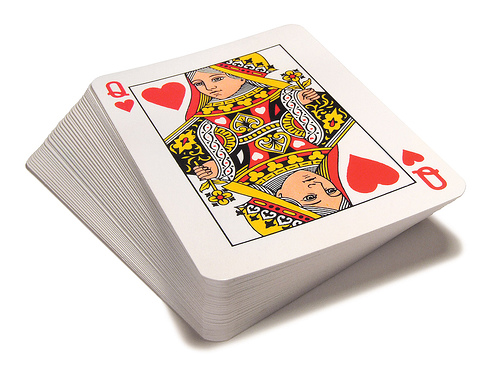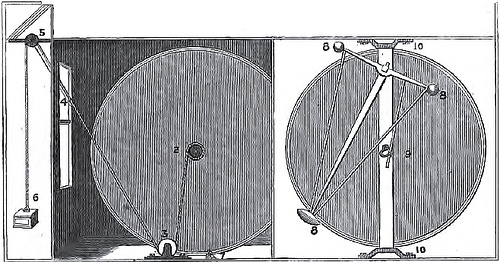651 × 156 = 372 × 273
Month: December 2007
A Puzzle Deepens
Here’s an odd, little-cited detail in the mystery of the Mary Celeste, the American brigantine found sailing unmanned in the Atlantic in 1872. John Austin, the marine surveyor who inspected the ship for the board of inquiry, reported:
On approaching the vessel I found on the bow, between two and three feet above the water line on the port side, a long narrow strip at the edge of a plank under the cat-head cut away to the depth of about three eighths of an inch and about one and a quarter inches wide for a length of about six to seven feet. This injury had been sustained recently and could not have been effected by weather or collision and was apparently done by a sharp cutting instrument continuously applied through the whole length of the injury. I found on the starboard bow but a little further from the stern of the vessel a precisely similar injury at the edge of a plank but perhaps an eighth or tenth of an inch wider, which in my opinion had been effected simultaneously and by the same means and not otherwise.
“As the Official Surveyor for this Court of Inquiry,” Austin concluded, “I must profess intense bewilderment as to the tool used to cut such marks and why they would have been cut in any vessel at these locations.”
So, what, was she attacked by sea monsters? Who knows?
Gloom

Asked what condition of man most deserves pity, Ben Franklin answered, “A lonesome man on a rainy day who does not know how to read.”
“Calculating Girl”
In the spring of 1819, a little girl, about eleven years old, appeared at the Royal Exchange, and made some very extraordinary calculations. Several gentlemen asked her some intricate question, and while they were calculating it, she gave a correct answer. She was asked to multiply 525,600 by 250; which she answered in one minute, 131,400,000. A second question was, how many minutes there are in forty-two years? Answer, 22,075,200. She was next desired to multiply 525,000 by 450; answer, 236,250,000. Several other questions, equally difficult, were put, all of which she answered very correctly. It is remarkable, that the girl could neither read nor write. She stated herself to be the daughter of a weaver, living at Mile-End, New Town, of the name of Heywood.
— Cabinet of Curiosities, Natural, Artificial, and Historical, 1822
The Kruskal Count

Here’s a card trick devised by Rutgers physicist Martin Kruskal. Give a friend a deck of cards and ask her to follow these instructions:
- Think of a “secret number” from 1 to 10. (Example: 6)
- Shuffle the deck and deal the cards face up one at a time, counting silently as you go.
- When you reach the secret number, note the value of that card and adopt it as your new secret number. Aces count as 1; face cards count as 5. (Example: If the 6th card is a 4, then 4 becomes your new secret number.)
- Continue dealing, counting silently anew from 1 each time you adopt a new number. Remember the last secret card you reach.
That’s it. You just stand there and watch her deal. When she’s finished, you can identify her final secret card in any way you please, preferably through a grotesquely extortionate wager.
You can do this because you’ve simply played along. When she’s dealing, note the value of an early card and then silently follow the same steps that she is. Five times out of six, your “paths” through the deck will intersect and your final secret card will match hers. That’s far from obvious, though; the trick can be baffling if you refuse to explain it.
The Wheel of Orffyreus

On Nov. 12, 1717, German inventor Johann Bessler invited a committee of witnesses to a special room in the ducal castle at Weissenstein. In the room was a large wheel, 12 feet in diameter and 14 inches thick. At a push from Bessler it accelerated to about 26 rpm and maintained that speed. Under the committee’s supervision, the windows were secured and the Landgrave’s own seal was put on the door. The room was reopened twice in 54 days, and on both occasions the wheel was still spinning.
Bessler demanded 20,000 pounds for his secret. (He said the weights inside the wheel “could never obtain equilibrium.”) But while the Royal Society was debating whether to pay him, Bessler discovered one witness examining the axle, accused him of duplicity, and angrily smashed the wheel. He vanished into obscurity after that, dying in 1745.
The demonstration has never been explained. If Bessler had a secret, he took it with him.
